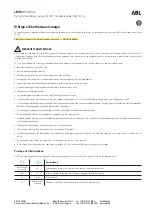
4-9
Remember: Anti
-
lock doesn’t change the time you need
to get your foot up to the brake pedal or always decrease
stopping distance. If you get too close to the vehicle in
front of you, you won’t have time to apply your brakes
if that vehicle suddenly slows or stops. Always leave
enough room up ahead to stop, even though you have
anti
-
lock brakes.
Using Anti
-
Lock
Don’t pump the brakes. Just hold the brake pedal down
firmly and let anti
-
lock work for you. You may feel a
slight brake pedal pulsation or notice some noise, but
this is normal.
When your anti
-
lock system
is adjusting brake pressure
to help avoid a braking skid,
this light will come on.
See “Low Traction Light”
in the Index.
Braking in Emergencies
With anti
-
lock, you can steer and brake at the same
time. In many emergencies, steering can help you more
than even the very best braking.
Traction Control System (Option)
Your vehicle may have a traction control system that
limits wheel spin. This is especially useful in slippery
road conditions. The system operates only if it senses
that one or both of the rear wheels are spinning or
beginning to lose traction. When this happens, the
system for V8 engines works the rear brakes and for
V8 and V6 engines reduces engine power by closing the
throttle and managing engine spark to limit wheel spin.
This light will come on
when your traction control
system is limiting wheel
spin. See “Low Traction
Light” in the Index. You
may feel or hear the system
working, but this is normal.
The traction control system may operate on dry roads
under some conditions, and you may notice a reduction
in acceleration when this happens. This is normal and
doesn’t mean there’s a problem with your vehicle.
Examples of these conditions include a hard acceleration
in a turn, or an abrupt upshift or downshift.
















































